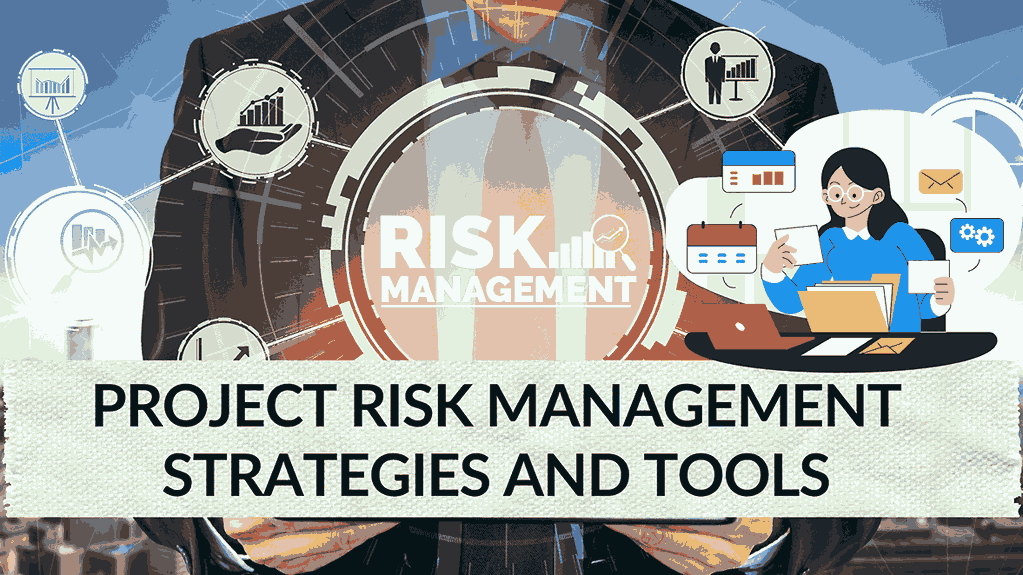Project Risk Management Strategies and Tools


Risk management is a critical aspect of overseeing any project, as it provides an excellent way to handle the challenges you may encounter. Project managers employ various tools and techniques to make informed decisions that can safeguard and add value to their projects. By using risk management tools, you can effectively track project progress and develop strategies to address potential risks that may arise during the project’s lifecycle.
In this article, we’ll dive into the concept of risk management, explore 11 common risk management tools used in project management, and discuss why these tools are vital for the success of any project.
What Is Risk Management?
Risk management involves the process of identifying, understanding, and responding to potential factors that could lead to project delays or failures. Companies often develop strategies to mitigate risks related to:
- Technological issues
- Financial uncertainties
- Legal liabilities
- Natural disasters
By using risk management programs and tools, you can assess the full spectrum of risks associated with your project and analyze their potential impact on your strategic goals. You can also create measures to proactively address challenges, ensuring the successful outcome of your project.
11 Risk Management Tools to Use
Risk management tools are designed to address uncertainties by identifying, analyzing, prioritizing, responding to, and tracking risks. Here are 11 essential risk management tools for project management:
1. Time Tracking
Time- and task-tracking tools allow you to monitor the progress of individual tasks regularly, ensuring that they are on track for timely project delivery. These tools enable you to:
- Input tasks and their deadlines for transparency.
- Remind team members of their responsibilities and due dates.
- Get real-time information on task completion rates.
Using time tracking tools, team leaders can make informed decisions about allocating additional time for tasks that take longer than initially predicted.
2. Risk Data Quality Assessment
This tool helps you review data related to potential risks and assess their relevance to your current project. It collects data that can help you better understand risk elements like accuracy, reliability, and quality. You can evaluate the impact of specific potential risks on your overall project and develop clear, strategic plans to address them.
3. Risk Register
A risk register is a platform that controls potential risks within a project. It collects, documents, and monitors risks, allowing you to strategize and proactively respond to challenges. This tool helps prioritize risks, assign team members to resolve them, and track progress and resolutions.
4. Resource Management
Resource management tools help organizations determine if their teams can take on new or unexpected tasks. These tools often present information in dashboards, including team member schedules, skills, and availability. If an unexpected event requires a task handover, you can use this tool to identify staff with the availability and expertise to complete the task on time.
5. Probability and Impact Matrix
The probability and impact matrix assists in prioritizing risks by evaluating their impact on the project. It combines the probability and impact scores of individual risks and ranks them by severity. This tool provides context for risks within the project, enabling you to create mitigation plans that save time and optimize resource usage.
6. SWOT Analysis
SWOT analysis is used to review a project’s strengths, weaknesses, opportunities, and threats. Strengths and opportunities are positive aspects that contribute to successful task completion within budget and on time. Weaknesses indicate areas for improvement, while threats are external factors or constraints that can hinder project success. You can leverage project strengths and opportunities to proactively address challenges.
7. Budget Tracking
Budget tracking tools help project managers predict future expenses and compare them to the actual project spending. These tools often feature reporting dashboards displaying the project’s total budget, current spending, and remaining budget. Budget tracking ensures that your team stays within budget and allows you to allocate reserves for contingencies.
8. Root Cause Analysis
Root cause analysis focuses on identifying the cause of a problem rather than its symptoms. By answering questions like what happened, why it happened, and how it happened, you can develop action plans to prevent similar errors in the future, making it a responsive and preventive approach to risk management.
9. Brainstorming
Brainstorming sessions are essential for assessing potential risks that may affect a project. By involving team members and reviewing project documents, historical data, and relevant articles, you can identify and address potential risks more effectively.
10. IT Risk Assessment Templates
Originally developed for information technology (IT) projects, these templates are versatile tools for assessing risk in various project areas. They provide a list of risks, each with its own number for itemization, along with a chart containing factors such as topic, control environment, control activities, prior assessments, likelihood, impact, and risk level. Built-in calculators help determine risk likelihood and impact, allowing you to compare and prioritize different risks.
11. Reserve Analysis
Reserve analysis helps project managers determine the amount of money to set aside as a contingency before a project begins. This reserve can be used to offset unexpected costs that may arise during the project, mitigating the risk of significant budget impact due to unforeseen challenges or delays.
In conclusion, risk management is a critical aspect of project management, and using the right tools can make a significant difference in ensuring the success of your project. By leveraging these 11 risk management tools, project managers can identify, assess, and mitigate potential risks, leading to more efficient project execution and a higher likelihood of project success.
For further reading and insights on risk management, check out these valuable resources:
- Simplilearn’s Risk Management Strategies
- Invensis Learning: Risk Management Tools and Techniques in PM
- ProjectManager.com: Risk Management Tools and Techniques
- Indeed: Career Advice on Risk Management Tools





